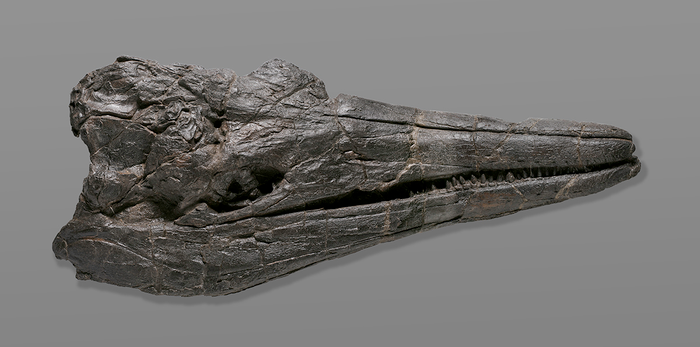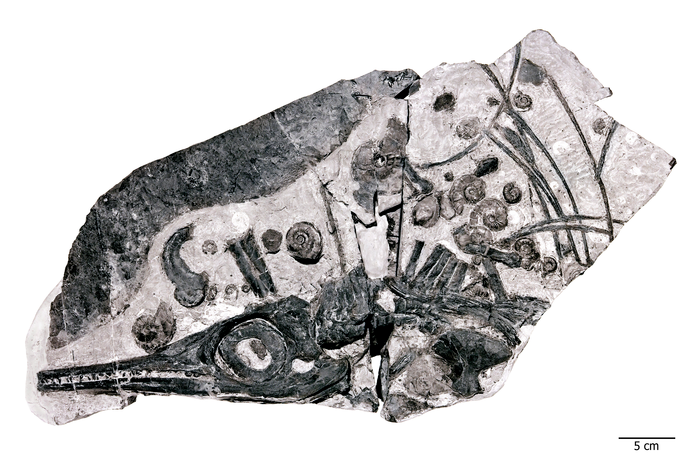Earth’s first-known giant rapidly evolved into sea monsters as big as whales, study finds
Giant ichthyosaur took only fraction of time it took whales to evolve into their ginormous size

Your support helps us to tell the story
From reproductive rights to climate change to Big Tech, The Independent is on the ground when the story is developing. Whether it's investigating the financials of Elon Musk's pro-Trump PAC or producing our latest documentary, 'The A Word', which shines a light on the American women fighting for reproductive rights, we know how important it is to parse out the facts from the messaging.
At such a critical moment in US history, we need reporters on the ground. Your donation allows us to keep sending journalists to speak to both sides of the story.
The Independent is trusted by Americans across the entire political spectrum. And unlike many other quality news outlets, we choose not to lock Americans out of our reporting and analysis with paywalls. We believe quality journalism should be available to everyone, paid for by those who can afford it.
Your support makes all the difference.Scientists analysing the two-metre-long skull fossil of a newly discovered species of giant ichthyosaur – a behemoth marine reptile that ruled the seas during the time of the dinosaurs – have found that it rapidly evolved to become as big as whales.
The findings shed light on how present-day whales became the largest animals to ever inhabit the Earth, say the scientists including those from the Natural History Museum of Los Angeles County in the US.
While it took whales about 9 per cent of their 55-million-year history to evolve into the ocean giants we know today, the researchers say ichthyosaurs evolved to similar sizes within the first 1 per cent of their 150-million-year history on Earth.
“Ichthyosaurs derive from an as yet unknown group of land-living reptiles and were air-breathing themselves,” study lead author Martin Sander, who is a paleontologist at the University of Bonn, explained in a statement.
Evolving fins and hydrodynamic body-shapes that are seen in both fish and whales, these giant reptiles swam the ancient oceans for nearly the entirety of the Age of Dinosaurs, the scientists say.
“From the first skeleton discoveries in southern England and Germany over 250 years ago, these ‘fish-saurians’ were among the first large fossil reptiles known to science, long before the dinosaurs, and they have captured the popular imagination ever since,” Dr Sander added.
In the new study, published in the journal Science on Thursday, scientists analysed a giant ichthyosaur fossil excavated from a rock unit called the Fossil Hill Member in the Augusta Mountains of Nevada.
The well-preserved skull, along with part of the backbone, shoulder, and forefin, dates back to the Middle Triassic period – 247-237 million years ago – and represents the earliest case of an ichthyosaur reaching epic proportions as big as a large sperm whale at more than 17 meters (55.78 feet) long, the study noted.
The new species, the scientists found, stalked the oceans only about three million years after the first ichthyosaurs got their fins wet, suggesting they got humongous in an amazingly short time.
Based on the elongated snout and conical teeth, they say C youngorum may have preyed on squid, fish, and may have also hunted smaller and juvenile marine reptiles due to its size.

The researchers say the marine food webs of this time period could support such massive creatures, despite the absence of many primary producers following the Permian extinction event 252 million years ago which wiped out nearly 96 per cent of all the sea-dwelling species of the time.
The study also found that while both modern-day whales and ichthyosaurs have evolved very large body sizes, their respective evolutionary trajectories toward gigantism were different.
While whales took much longer to reach their size limits, Ichthyosaurs had an initial boom, becoming giants early on in their evolutionary history, the scientists say, adding that they both relied on exploiting niches in the food chain to make it really big.
“Ichthyosaur history tells us ocean giants are not guaranteed features of marine ecosystems, which is a valuable lesson for all of us in the Anthropocene, especially if we want to sustain the presence of the surviving ocean giants among us that contribute to our own well-being,” Lene Delsett and Nicholas Pyenson from the National Museum of Natural History write in a linked commentary on the study.
Join our commenting forum
Join thought-provoking conversations, follow other Independent readers and see their replies
Comments